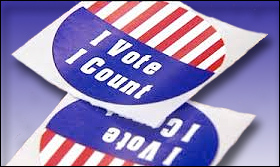By Jim Ellis
 Oct. 31, 2018 — Now more than halfway through the early voting period in the 37 states that offer early voting options for the populace, some places are turning in record participation rates. Each state has various nuances in their early voting procedures, so comparing the early reports to each other is of little value. Going back to contrast the current 2018 reported numbers with how that particular state voted in the last midterm election (2014) does have significance, however.
Oct. 31, 2018 — Now more than halfway through the early voting period in the 37 states that offer early voting options for the populace, some places are turning in record participation rates. Each state has various nuances in their early voting procedures, so comparing the early reports to each other is of little value. Going back to contrast the current 2018 reported numbers with how that particular state voted in the last midterm election (2014) does have significance, however.
Already, in the latest available reports according to the United States Election Project administered by the personnel at the University of Florida, seven states are reporting more received early voting ballots than were recorded for the entire 2014 pre-election period. They are:
• Tennessee – 162.3% more ballots (1,029,846 versus 634,364 recorded in 2014)
• Texas – 144.3% increase (2,980,915 versus 2,066,368 recorded in 2014)
• Indiana – 127.9% increase (292,726 versus 228,932 recorded in 2014)
• Nevada – 122.5% increase (372,455 versus 304,005 recorded in 2014)
• Georgia – 111.1% increase (1,188,636 versus 1,069,912 recorded in 2014)
• Minnesota – 106.0% increase (249,909 versus 235,808 recorded in 2014)
• Delaware – 103.2% more ballots (8,550 versus 8,288 recorded in 2014)
An additional seven states have so far recorded better than 85 percent of their early voting total in comparison to their entire 2014 pre-election voting universe:
• North Carolina – 97.1% of previous (1,140,657 versus 1,174,188 recorded in 2014)
• Virginia – 94.2% of previous total (191,755 versus 203,556 recorded in 2014)
• New Mexico – 93.5% of previous total (239,973 versus 256,744 recorded in 2014)
• Maryland – 90.2% of previous total (326,822 versus 362,274 recorded in 2014)
• Louisiana – 87.6% of previous total (215,189 versus 245,609 recorded in 2014)
• Montana – 87.6% of previous total (197,126 versus 225,136 recorded in 2014)
• Florida – 85.9% of previous total (2,736,449 versus 3,187,342 recorded in 2014)
Running about even or behind the 2014 midterm totals are:
• Oklahoma – 47.4% of previous total (33,060 versus 69,797 recorded in 2014)
• Ohio – 39.4% of previous total (341,267 versus 865,449 recorded in 2014)
• Vermont – 30.9% of previous total (9,465 versus 30,602 recorded in 2014)
• Alaska – 26.0% of previous total (23,450 versus 90,336 recorded in 2014)
Here is where the four states stand that obtain all or most of their votes through mail:
• California – 44.3% of 2014 total (2,012,676 versus 7,513,972 total votes in 2014)
• Colorado – 37.9% of 2014 total (788,185 versus 2,080,071 total votes in 2014)
• Washington – 34.8% of 2014 total (738,628 versus 2,124,330 total votes in 2014)
• Oregon – 27.1% of 2014 total (417,956 versus 1,541,782 total votes in 2014)
In the most prolific early voting states for this year, four of the seven: Tennessee, Texas, Indiana, and Georgia, are strong Republican states. This heavy increase in early voting does not necessarily mean more Republicans are engaging with the early voting process, but this is more likely than not the case since they have more GOP members or people who identify with the party than there are Democrats or Democratic identifiers.
Democrats might be doing better in the secondary states, those that are almost at parity with their 2014 early voting participation rate with just over half of the period ended.
Finally, the all-mail (or largely all-mail states: Colorado and California still allow some in-person voting) states appear to be running behind their 2014 totals, as none are even 50 percent of the way to their previous turnout number. This situation could easily change as we get closer to the election, however.
Additionally, California and Washington allow ballots to be postmarked on Election Day itself, meaning we are not yet halfway through the voting period in those two particular domains.
As we have said before, it is difficult to draw any firm conclusion from these numbers as to how the final vote in these various states may be determined. For the most part, however, since early voting has substantially increased in at least 14 of the 37 tested states, we could be seeing an increased overall 2018 midterm participation level. Either that, or simply more regular voters are taking advantage of the early voting option.
